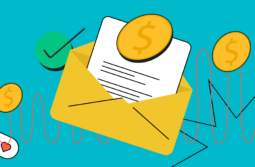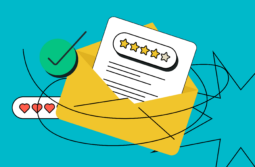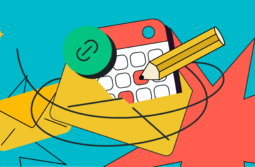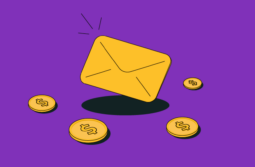Personalized emails are not new for eCommerce businesses. But still, it may be hard to keep in mind all types of emails you can use for engagement with customers. That is why I have prepared a few things you can do to personalize your email campaigns, boost your sales drastically and increase the engagement rate.
The more your message is personalized and tailored to the needs of a specific person, the more likely you are to get a response.
Your next questions seem obvious:
How can I personalize my emails and without spending lots of time on it?
How can I choose the best time to send the email while taking into consideration the stage of the buyer’s journey?
How can I take into account my clients’ product preferences?
How can I target the best customers with the best offers?
Let’s dive in and answer all of them!
Send email campaigns depending on the customer’s actions
So, you’ve got the email of the person who has shown interest in your website and has trusted you with their contact information. How do you target him correctly?
First of all, don’t spam him with emails. Sending infrequent, but highly targeted campaigns will most likely help you to get more conversions without harming your brand.
Secondly, send personalized offers. A client will be much happier with an email with 20% off his favourite shoes rather than a great sale on sneakers that he has never worn.
Examples of the personalized emails:
Periodical sales
If you are selling children’s shoes, you can assume your clients will need another pair in 6 months. So you can send emails to your buyers every 6 months with a sweet offer reminding them of you (and a valuable content or discount).
Reactivation sales
You can target your clients if they haven’t made a purchase for 1/2/3/5 days after viewing your product. You can simply remind them about their visit to your website or do more to interact with them.

First of all, think why a customer has changed his mind and decided not to buy?
One of the most obvious reasons, may be the price. Try to target your subscribers with a discount or a special offer making the price psychologically lower. You may give them a coupon for the next purchase after this one, offer a bundle with the price cut.
Another way you can reactivate your subscribers is to reduce the shipping costs or just make the shipping free. You may also want to try out offering a free consultation or asking for a feedback why a person didn’t make a purchase.
Warning! Always keep in mind that you need to be able to afford this kind of margins and profit losses and count the money before launching this kind of campaigns.
Cart abandonment emails
Offer a promo code to potential buyers who added a specific product to a cart but haven’t ordered it yet. These customers may find your reminder with a promo code quite useful. Here is how HostelWorld does it:

Special offers
People who frequently respond to your email campaigns may be targeted with a special contest for the most active clients. For example, you can create an email campaign for the clients who often come to your website from emails and buy.
One more option is that you can invite them to an event. These events include a free demonstration of the new product, Beta testing and possibility to commit to the creation of a new product line, pre-sale.
Moreover, you can create a Loyalty Club and target the most active customers with a free webinar or consultation with your specialists.
You should segment people to whom you send the emails to the groups according to the level of their engagement. For example, you can create custom groups: people who never open your emails, who open them rarely and never click, and those who always open your emails and often click.
Product Recommenders and Back in Stock Alerts
Imagine your client has already spent some time reading about 10 different skateboards and read an article on your blog about how to choose the best one but hasn’t bought any of them yet. Time to activate him with an offer or an article!

How do I do these email campaigns? First of all, you should integrate an email service with the platform you are using. After that, draw imaginable email paths for your customers and craft automated email flows.
Send email campaigns depending on the customer profile
You can use data from CRM or subscription forms to get the age, gender, and location of your clients that will help you with personalization.
When gender matters
Men and women respond differently to the same message, and they are often interested in different categories of goods.

Segmenting your customers must be followed by a segmentation of the goods suitable for these gender groups. Craft an offer that suits the target audience the best: eg pink cases for iPhone for female and grey ones for a male. Take into consideration the data on the sales you can get from CRM system: what kind of products are preferred by men and woman.
Female and male customers are likely to respond differently to the same colour. You can either use your brand colours, neutral colours, or create personalized email campaigns for each gender.

Location-based email campaigns
Let people living in a certain area know about a sale at the nearest store. Gather customers from the same city for an event.
Emails based on previous orders
Track how many orders a buyer has made over the last 3 months and how much money was spent. For example, you can target customers who are most likely to buy cheap items with your offers for non-expensive goods or services.
Wrap up
Email marketing remains a powerful marketing tool for eCommerce businesses. In order to make campaigns effective, a marketer must tailor the message to the target audience. Depending on the customer’s actions or on the customer’s profile you can craft an offer that will fit your subscribers.
Depending on the sales cycle, types of the customers, and their interaction with your brand you can create customized emails that convert. Use data about the sales, information about clients from CRM and create personalized sequences.





